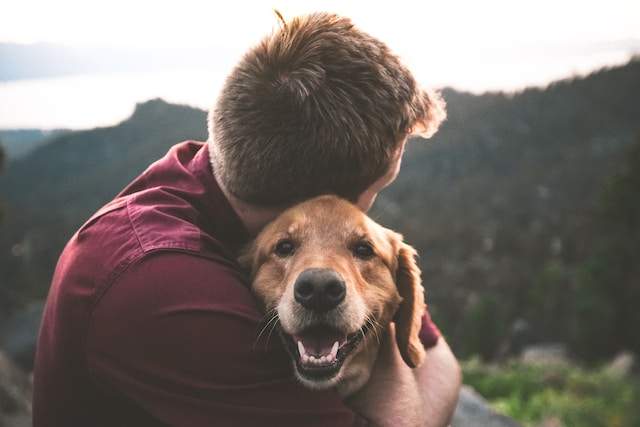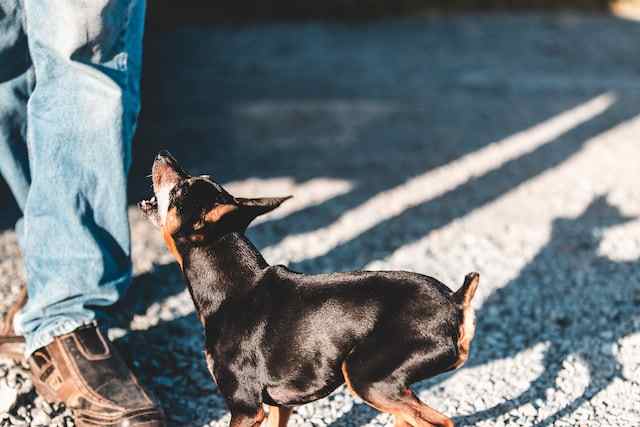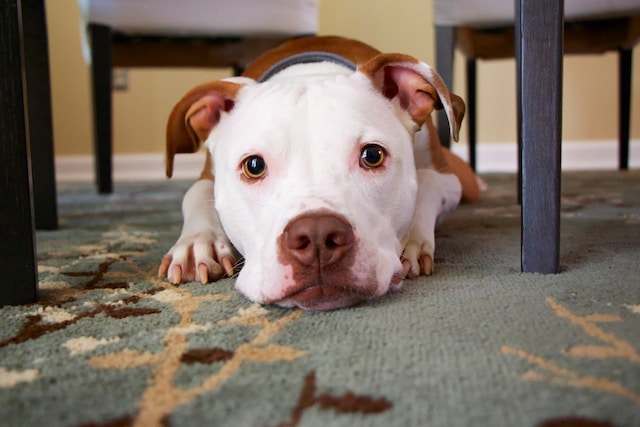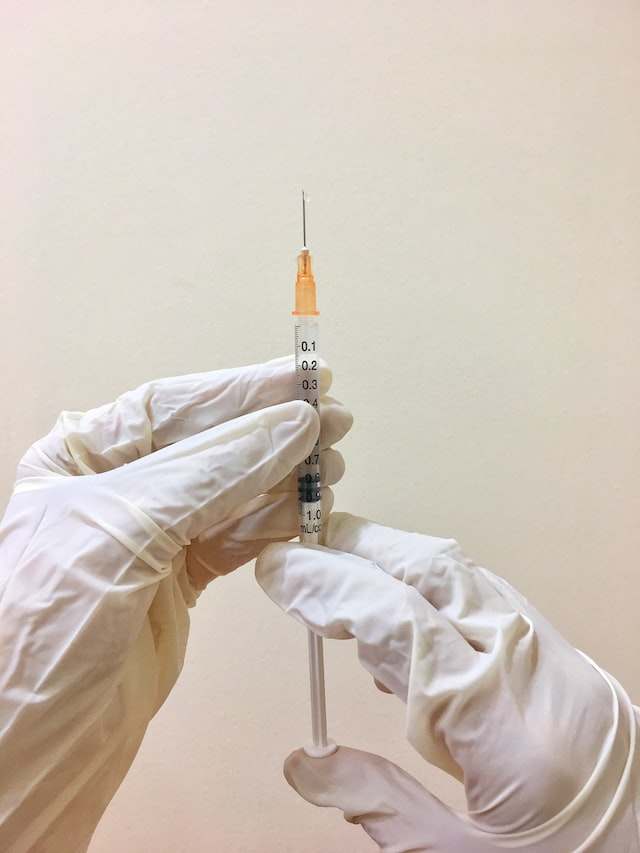
What is arthritis in dogs?
Arthritis is an inflammation of the joints of your dog. arthritis occurs when the cartilage between joints becomes less smooth and damaged and this causes the surface of the bone to rub together, become painful, swell, become stiff and uncomfortable.
Arthritis in dogs is long-lasting.
Types of arthritis in dog’s back legs

The most common type of arthritis in dog’s back legs is osteoarthritis and the other two are rheumatoid arthritis and septic arthritis.
Osteoarthritis in dog’s back legs
Osteoarthritis in a dog’s back legs is also called Degenerative Joint Disease (DJD). It is an inflammation of the joint caused by the deterioration of cartilage.
The function of cartilage in a healthy joint is to provide cushioning for the joints to move smoothly through their full range of motion.

In dogs that have osteoarthritis, the cartilage cushion begins to break down and the loss of this cushion results in pain, development of bone spurs, inflammation, and decreased range of motion.
Rheumatoid arthritis in dog’s back legs

Rheumatoid arthritis is an immune-mediated disease, it occurs when your dog’s immune system attacks its joint.
Rheumatoid arthritis is very rare, research says it occurs in approximately 2 per 25,000 dogs.
Small or toy dog breeds between the age of 8 months to 8 years.
septic arthritis in dog’s back legs

septic arthritis is a type of arthritis when bacteria or other infectious agent is introduced into one or more of your dog’s joint which leads to painful inflammation.
Dogs between 3 to 11 years of age are the ones with most cases of septic arthritis but it can occur in dogs of any age.
Also, it is more common in male, large and giant breed dogs.
Symptoms of arthritis in dog’s back legs

If your try to pull or fully extend your dog’s hip bone or ankle and they show any sign of pain or resistance, it could be a sign of arthritis.
Inflammation on or around the joint in the back legs
Pain when jumping
Limping
Abnormal posture
Favouring; if your dog is putting less weight on an of its back legs and putting more weight on the other, favouring the leg with less weight and it could be because he/she feels pain in that leg.

Lameness
Reluctance to rise from a resting spot
Repetitive licking of the back legs
Dogs with arthritis tend to sleep more because of the pain
They may show signs of pain when they dry to defecate or they might not make that posture they make when they try to defecate because they feel pain in their back leg.

Behaviour change; your dog may get cranky and aggressive, this is because of the pain they are going through.
Also, they don’t want anything that would change their position because it would cause them more pain, so they would do whatever it takes to maintain that position, even if it means being aggressive.
Weight gain; since they don’t move around like before but still eat the same amount of food, they would gain weight and this can worsen their arthritis.
Treatment for arthritis in dog’s back legs

Asides septic arthritis that can be treated, other arthritis don’t have a cure but you could help your dog manage it in a way that they could still enjoy life.
I always tell people who reach out to me about their dog’s arthritis that they should discuss it with their vet to develop a long-term treatment plan that would suit their dog.
I would also be giving you some advice from people whose dogs have arthritis in their back legs in the Reddit and Facebook dog groups I belong to and from some people I know personally.

I noticed that people whose dogs were coping very well with arthritis in their back legs had four core things that they did.
They were managing their dog’s nutrition, they had pain management, their dogs were undergoing rehabilitation therapy, and they also ensured a quality lifestyle for their dogs.
We would be talking about all these things but you and your vet don’t have to do exactly everything I would explain, you could pick the ones beneficial for your dog.
Nutrition for arthritis in dog’s back legs

The first thing to do is to make sure your dog is not overweight because it would put more stress on the joint and weight loss would help the joint because the joint should not carry the weight it carried before. After all, it is weaker.
Research has also shown that the fat (adipose tissue) that accumulates in overweight and obese dogs secretes inflammatory and pro-inflammatory hormones that contribute to the inflammation and pain of arthritis.
So, you should know that weight and obesity are very important in arthritis in a dog’s back legs.
Your goal should be to burn fat and preserve or build muscle, giving your dog a lean body shape.
You and your vet should discuss and come up with the best you can help your dog achieve a lean body.

When I say, a lean body, I mean the waistline should be well-defined and visible when viewed from above, a tucked-up abdomen when viewed from the side, and you should be able to feel (not see) the ribs on the sides of the chest just behind the shoulder.
Once your dog is lean, your vet is the best person to nutrients and joint support products suitable for your dog.
However, people I have talked to claimed that diets rich in omega 3 fatty acids from fish oil or algae sources, EPA & DHA to be precise, provided demonstrable joint support.

The level of omega 3 fatty acid must be high enough to make an impact on the joints in your dog’s back legs.
So, you can choose to supplement the chosen ratio with an omega-3 fatty acid that is easily absorbed like triglyceride.
Foods that contain chondroitin sulphate are great for dogs with arthritis.
Chondroitin sulphate is an essential component of cartilage and it is important for the elasticity and function of articular cartilage where it is mainly attached covalently to core proteins in the form of proteoglycans.

Many dog parents have said food high in glucosamine has also helped their dogs’ joints.
Glucosamine plays an important role in making glycosaminoglycans and glycoproteins, which are essential building blocks of many parts of your joints, including ligaments, tendons, cartilage and synovial fluids.
There are also some clinically proven dog food that can help with arthritis in your dog’s back legs, you should discuss with your vet to find out the most suitable one for your dog.
Pain management for arthritis in dog’s back legs
Non-steroidal anti-inflammatories (NSAIDs)

Most of the dog parents I talked to said their dogs take NSAIDs and it helps for pain.
NSAIDs are medicines that are widely used to relieve pain, reduce inflammation, and reduce high temperatures.
NSAIDs work by down-regulating inflammatory mediators in the body called prostaglandins (PGs). One of the roles of PGs is to mediate inflammation.
Your vet would help you choose the appropriate NSAID for arthritis in your dog’s back leg.
Arthritis injections

Arthritis injections were also mentioned by some dog parents, they said their dogs with arthritis feel more comfortable and less pain for a period of time after they take it.
Arthritis injections increase joint fluid production and blood supply to joint surfaces, making your dog feel more comfortable.
Arthritis injection also protects the joints by promoting new cartilage formation and thickening the joint fluid to work as a better lubricant.
The best thing is that it provides pain relief and treats all the joints in the body at the same time.
Acupuncture

Acupuncture for arthritis in a dog’s back legs involves inserting single-use sterile thin filamentous needles into designated points in your dog’s legs.
When performed properly, acupuncture can help stimulate the release of the anti-inflammatory and pain-relieving hormones in your dog’
The people I spoke with said their dog’s muscles felt relaxed after acupuncture and they noticed an improvement in mobility and less pain.
Surgery

In very extreme cases, some surgical procedures can alleviate the pain associated with arthritis.
I have been told about femoral head/neck osteotomy and total hip replacement that can be with good results, joint arthrodesis (fusion) procedures can also help.
I have also heard of knee or elbow replacement but it is rarely considered.
But there might be some complications with surgical methods for treating arthritis in dog’s back legs’
Rehabilitation for arthritis in dog’s back legs

Rehabilitation includes techniques that can help decrease pain and improve mobility in dogs with arthritis.
Therapeutic exercise

Dog parents who incorporated therapeutic exercises into their home routine noticed an improvement in their dog’s functional mobility. This is because they help to increase your dog’s strength, flexibility, and proprioception.
Manual therapy

This is the use of joint mobilization, stretching, soft tissue massage/mobilization, and passive range of motion to help your dog’s arthritis.
The rehabilitation therapist will apply manual therapy to the arthritic joint in your dog’s back legs and other areas needed.
Hydrotherapy

Hydrotherapy and the underwater treadmill are used for dogs with arthritis. The buoyancy of the water which is determined by the height of the water, provides different levels of support for weak dogs or dogs in pain.
Underwater treadmill leads to increased muscle strength and endurance.
I have also heard from people who had dogs that have experienced it say that the water is kept around 85 degrees and this is a good thing because that temperature would help increase blood flow to the limbs.
Therapeutic modalities

A therapeutic modality is a way of relieving pain by applying something physical to your dog’s legs like lasers, extracorporeal shockwave, cryotherapy, thermotherapy, pulsed electromagnetic field, neuromuscular electrical stimulation etc.
Note: most of the people whose dogs are suffering from arthritis told me that when it comes to managing arthritis, it is important to use a combination of different methods for big improvement to be made.
So, you should speak to your vet to decide on the methods you should combine that would suit your dog.
Quality lifestyle for their dogs with arthritis

A quality lifestyle for dogs with arthritis on their back legs would include home modifications, activity modifications, and assistive devices.
FAQs about arthritis in dog’s back legs
How long can a dog live with arthritis?

If your dog’s arthritis is managed well they could live long and also enjoy their life.
There are a lot of cases of dogs with arthritis who lived a long and fulfilled life and ended up dying naturally in old age. This is only possible if your dog’s arthritis is well-managed.
Can dogs recover from arthritis?
Asides from septic arthritis all other arthritis does not have a cure and your dog has to manage with it for the rest of their life.
Can I massage my dog’s leg with arthritis?

Yes, you can but you have to meet a professional to teach you how to do it properly and in a way it would be most beneficial for your dog’s arthritis.
At what age do dogs get arthritis?
Arthritis is usually common in dogs from 7 years onward but it can happen at any age, there have been cases of dogs as young as one year who have arthritis.
When to euthanize dogs with arthritis?

If your dog can’t get up or walk or stops, you can consider euthanization.
Also if your dog is at a where he/she resists, cries or even scream when the joint range of motion is tested, has restless sleep because of pain, or poops indoors you should begin to consider euthanization.
Some people have their friends and family members assess their dog’s quality of life and make some decisions based on the results.
Related posts
Everything you need to know to about Dog leg pain to avoid immobility in your dog
How to prevent Swimmer Puppy Syndrome from killing your puppy